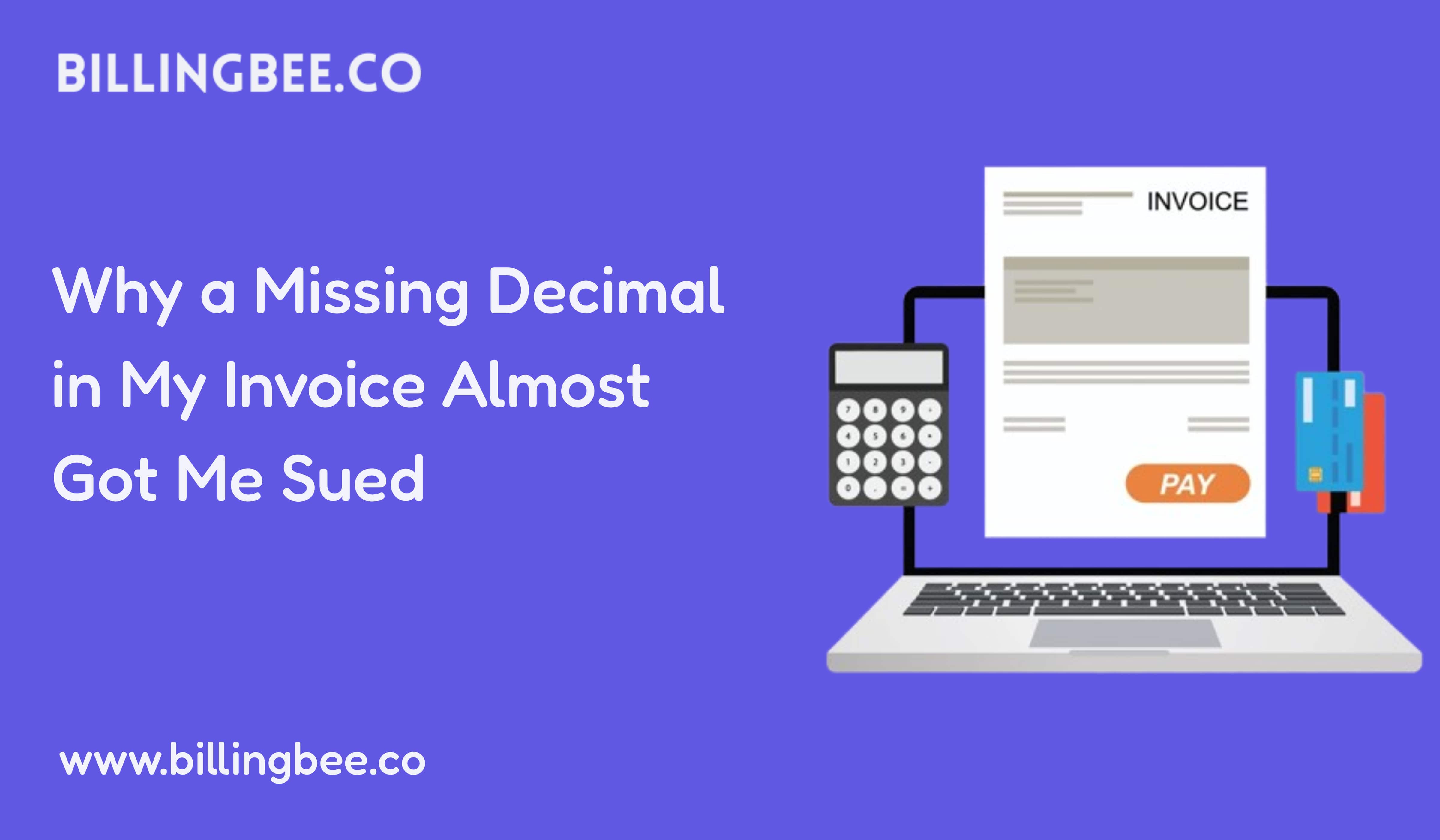Why a Missing Decimal in My Invoice Almost Got Me Sued




It started like any other Tuesday. I was catching up on admin work, sending out a few invoices after wrapping up a big project for a new client. Tight deadline, complex deliverables — but I pulled it off. I was proud. Until I wasn’t.
When the payment came through, something didn’t feel right. I checked the amount. $5,000. But I had billed for $50,000.
Wait—what?
Then I saw it. The decimal point. I had written “50000” instead of “50,000.00.” No commas. No decimal. And the kicker? My client assumed that was the agreed amount — a “heavily discounted” project rate, as they later described it.
The Danger of Small Mistakes in Big Transactions
We tend to think of invoicing as just routine paperwork. A formality. But in reality, it's a legal document — one that represents a transaction between two parties.
In my case, that tiny decimal omission almost spiraled into something much bigger:
- The client refused to pay the correct amount.
- They claimed they had it in writing — from me.
- Lawyers were looped in.
- It nearly became a legal battle over “implied agreement.”
And here’s the twist: they weren’t entirely wrong.
In many countries, especially across the EU and US, courts consider signed invoices and email confirmations as binding agreements. That missing decimal? It could have cost me $45,000 and my reputation.
What This Taught Me About Invoicing Precision
- Your invoice is a contract.
Every line, digit, and term matters. One wrong number can completely alter what you're legally owed. - Clients may not clarify mistakes.
Many won’t double-check your totals — they’ll assume you know what you’re doing. If it works in their favor, they might not say a word. - Manual processes are dangerous.
The more you rely on spreadsheets or DIY PDFs, the more room there is for human error.
How I Prevent It Now — and Why You Should Too
After this mess, I knew I needed a smarter system — one that wouldn't let a tiny formatting slip spiral into legal chaos. That’s when I switched to BillingBee.
Here’s how BillingBee ensures precision that protects you:
- Auto-formatting with currency and decimals: You can’t miss a decimal, because the platform formats totals automatically.
- Smart review prompts: BillingBee flags unusually large or small values based on your billing history.
- Error-proof templates: No more copy-pasting old invoices or making typos in manual entries.
- Legal-ready invoice structure: Your invoices are always clear, professional, and compliant — whether you're in the U.S., Europe, Asia, or anywhere in between.
Don’t Learn the Hard Way — Like I Did
I was lucky. After weeks of back-and-forth, I convinced the client it was an honest mistake, and we settled on a fair middle ground. But it came at a cost — stress, hours of negotiation, and a lesson I’ll never forget.
If you’re a freelancer, small business owner, or growing enterprise, your time is better spent doing what you do best — not playing invoice detective or navigating legal grey areas.
With BillingBee, you get peace of mind, every time you click “Send.”
Invoicing isn’t admin work. It’s your business’s signature.
And one decimal can make all the difference between getting paid and getting sued.
Would you trust your next $50,000 invoice to chance?
Switch to BillingBee — because one decimal should never cost you your business.
Rahul - 4 months ago